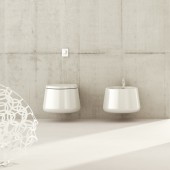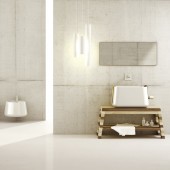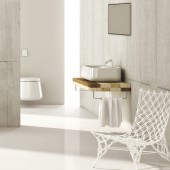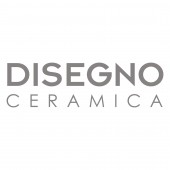Catino Bathroom collection by Emanuele Pangrazi |
Home > Winners > #28018 |
 |
|
||||
| DESIGN DETAILS | |||||
| DESIGN NAME: Catino PRIMARY FUNCTION: Bathroom collection INSPIRATION: CATINO is born from the desire to give shape to a thought. This collection evokes the poetry of everyday life through simple elements, which reinterpret existing archetypes of our imagination in a contemporary way. It suggests a return to an environment of warmth and solidity, through the use of natural woods, machined from solid and assembled to remain eternal. UNIQUE PROPERTIES / PROJECT DESCRIPTION: The pure shapes are the result of strong relationships between the dimensions, that give the pieces golden proportions. The ceramics define a landscape of monoliths, an alternation of capacious volumes to make a comfortable and useful bathroom. The benches have an original character and a strong visual impact, are made by keeping the wood grain horizontal and they are structured through an assembly of three different types of wood. Finally, the accessories, which are made of solid wood too, give to the collection a mix of flavours, between ease of use, functionality and poetry. The benches with an original character and a strong visual impact are made keeping horizontal the fiber wood and they are structured through an assembly of three different species of wood. Finally, the accessories, made of solid wood them too, give to the collection a mix of flavors, between ease to use, functionality and poetry. OPERATION / FLOW / INTERACTION: - PROJECT DURATION AND LOCATION: The project started in June 2012 and finished in August 2012 in Terni, and was exhibited in Cersaie in September 2012. |
PRODUCTION / REALIZATION TECHNOLOGY: All sanitaries and wash basins are made of vitreous china or fine fire clay. The benches and the accessories are made of three type of solid wood, tanganiga walnut, canaletto walnut and maple. SPECIFICATIONS / TECHNICAL PROPERTIES: - TAGS: mater, design, catino, emanuele, pangrazi, italian design, bathroom, sanitary ware, ceramic RESEARCH ABSTRACT: - CHALLENGE: - ADDED DATE: 2013-02-22 04:13:31 TEAM MEMBERS (1) : IMAGE CREDITS: Emanuele Pangrazi, 2012. |
||||
| Visit the following page to learn more: http://www.studiomater.com | |||||
| AWARD DETAILS | |
 |
Catino Bathroom Collection by Emanuele Pangrazi is Winner in Bathroom Furniture and Sanitary Ware Design Category, 2012 - 2013.· Press Members: Login or Register to request an exclusive interview with Emanuele Pangrazi. · Click here to register inorder to view the profile and other works by Emanuele Pangrazi. |
| SOCIAL |
| + Add to Likes / Favorites | Send to My Email | Comment | Testimonials | View Press-Release | Press Kit | Translations |







